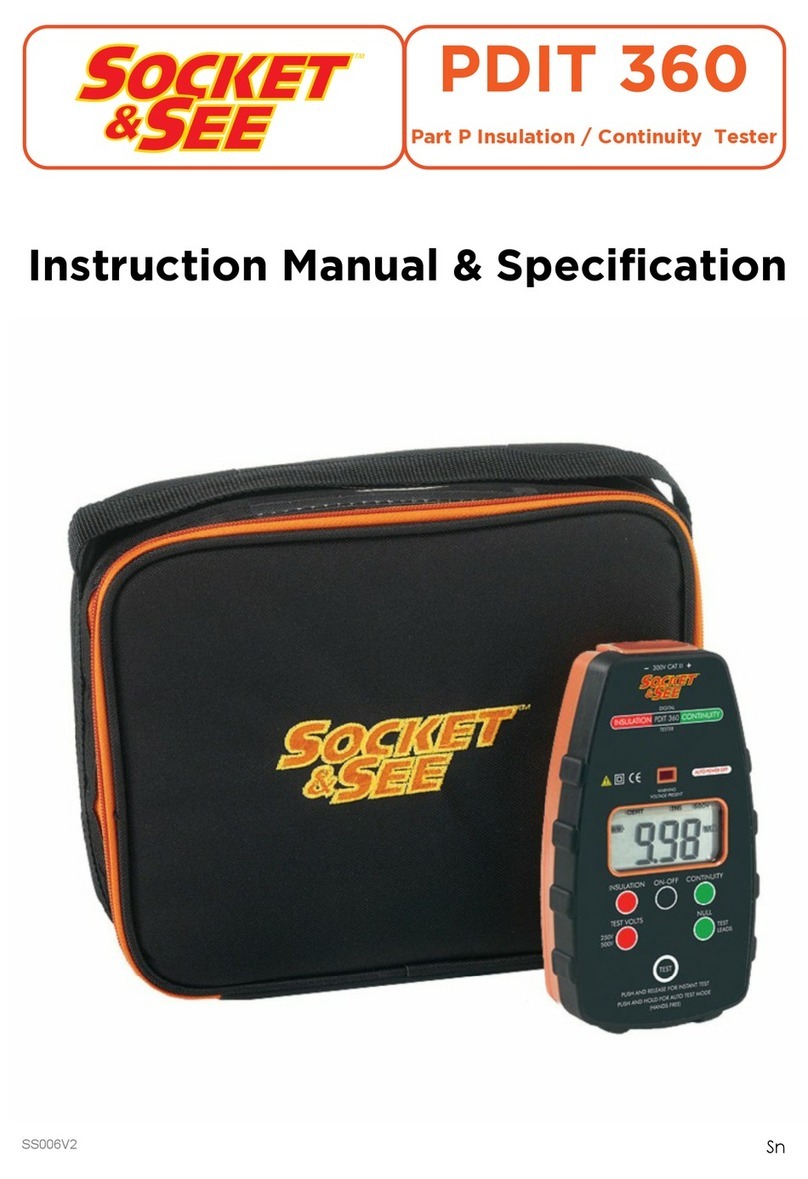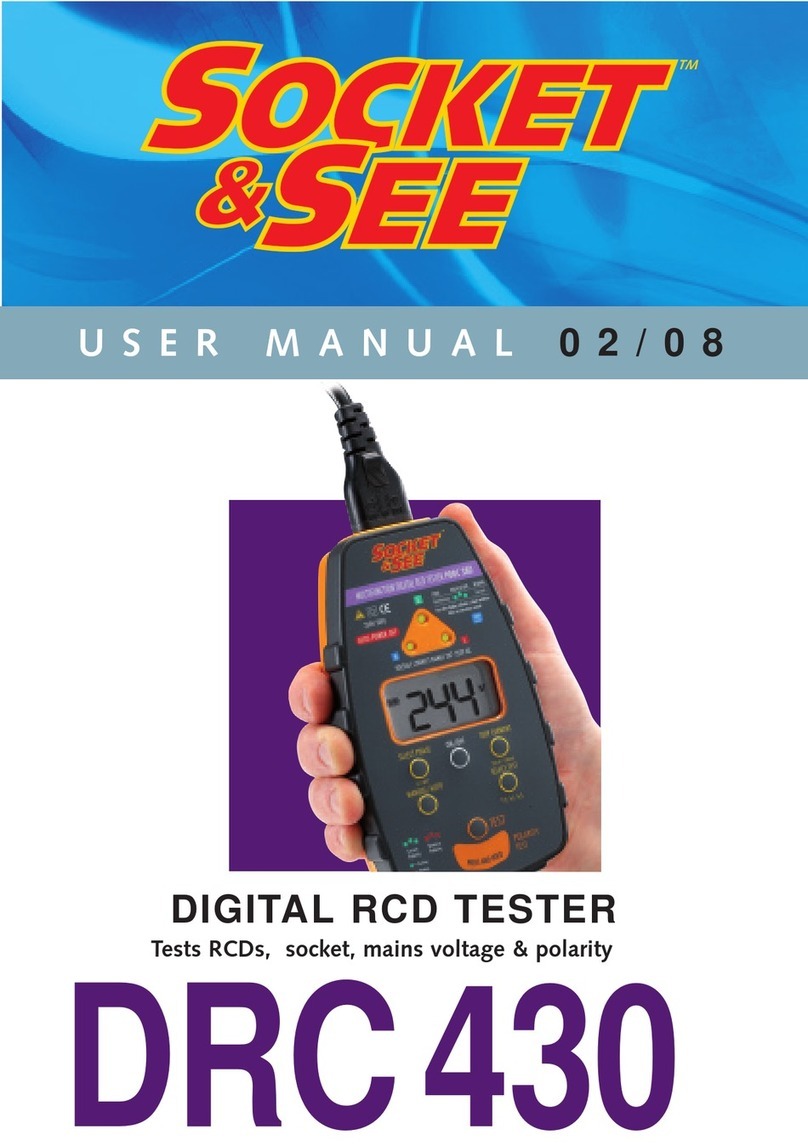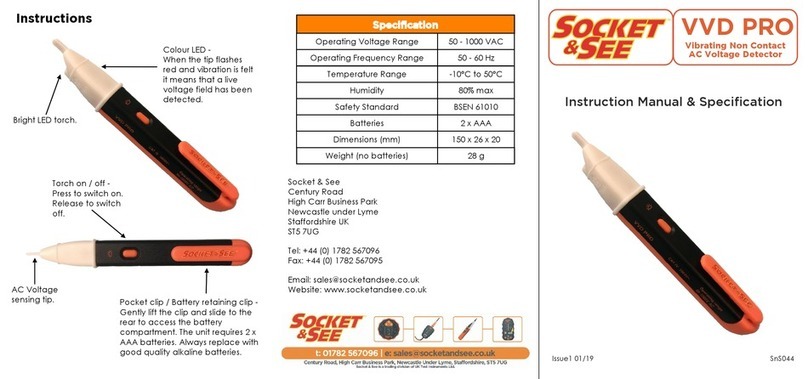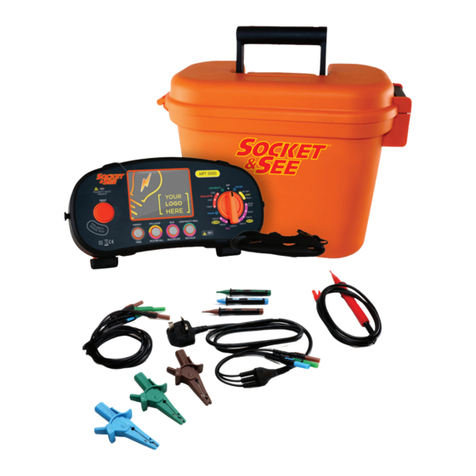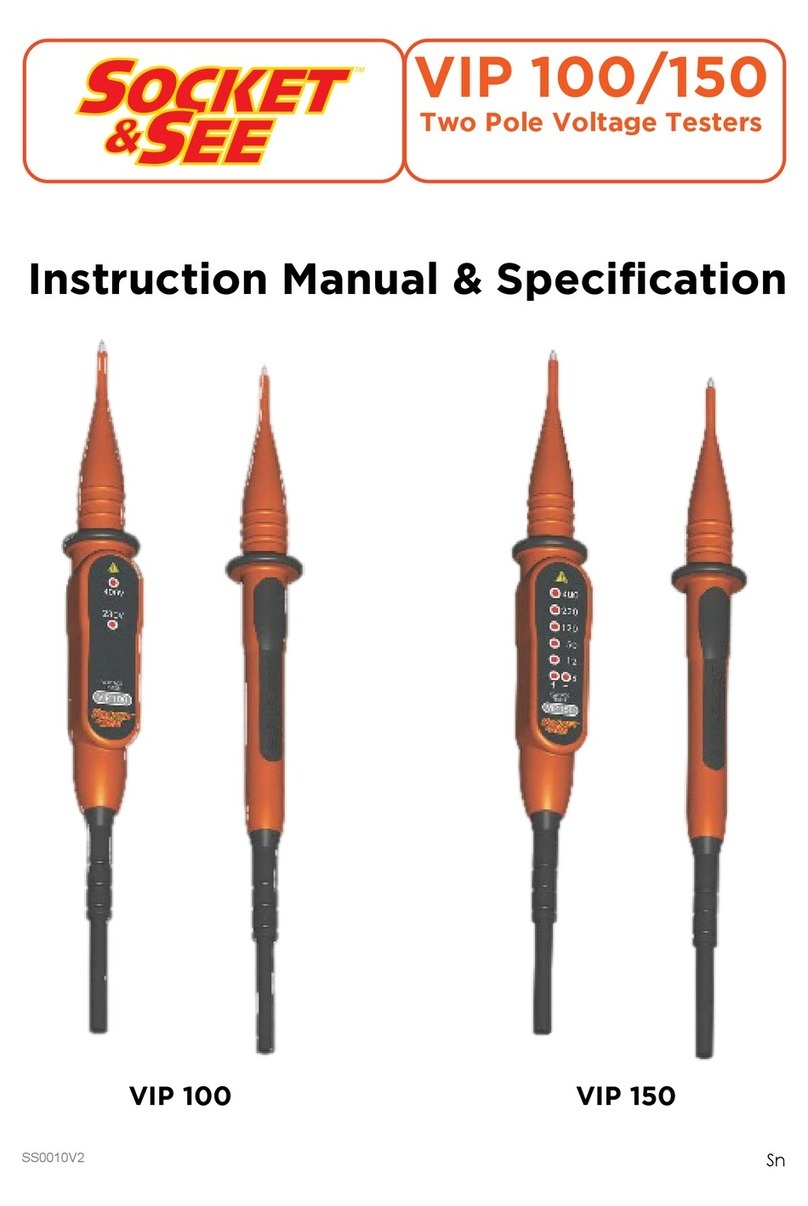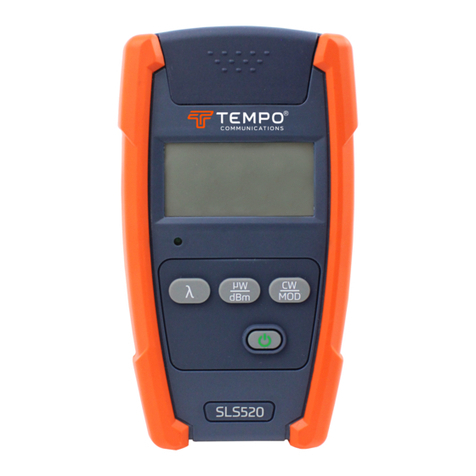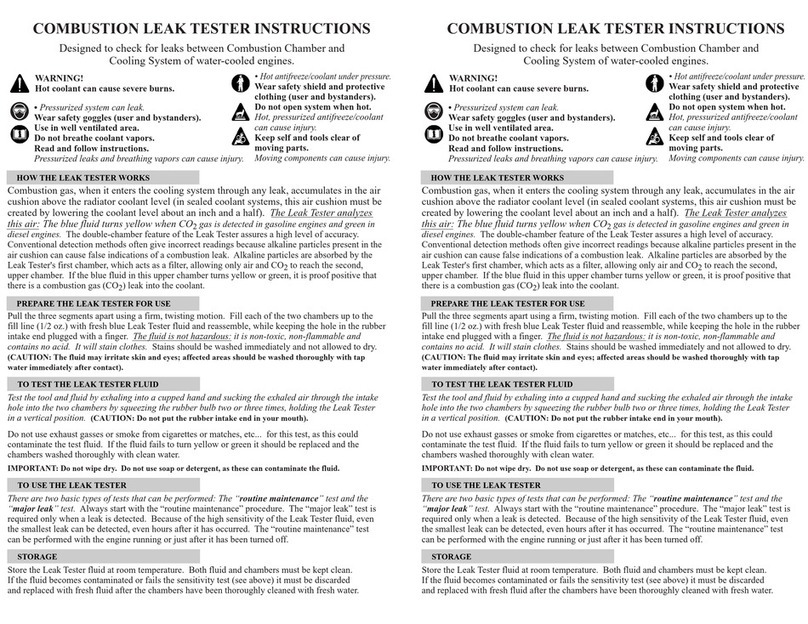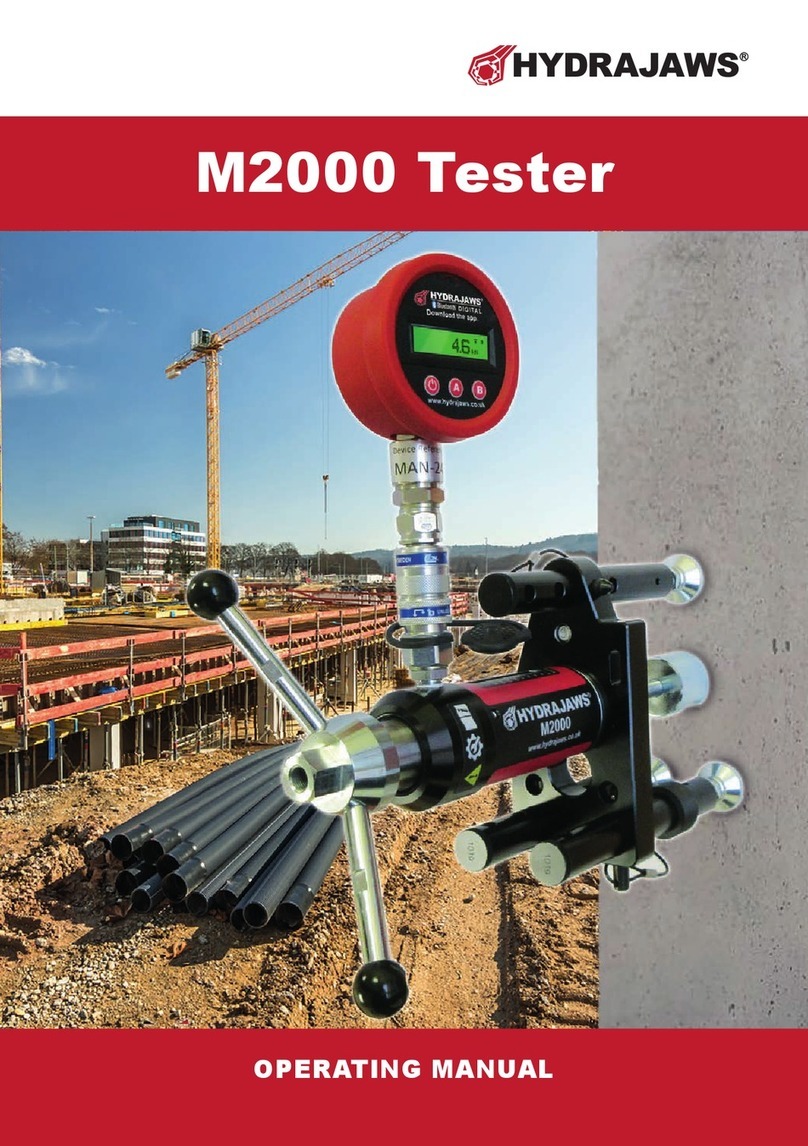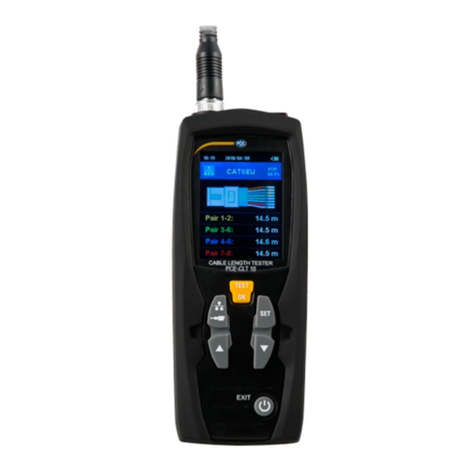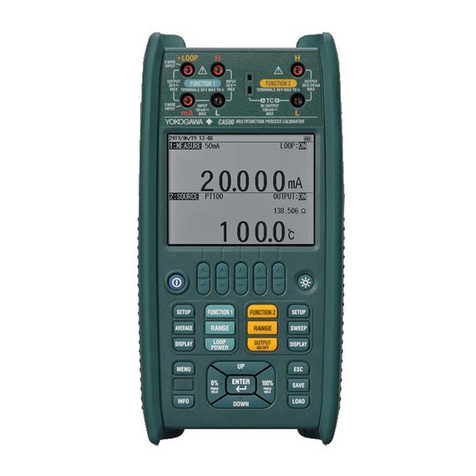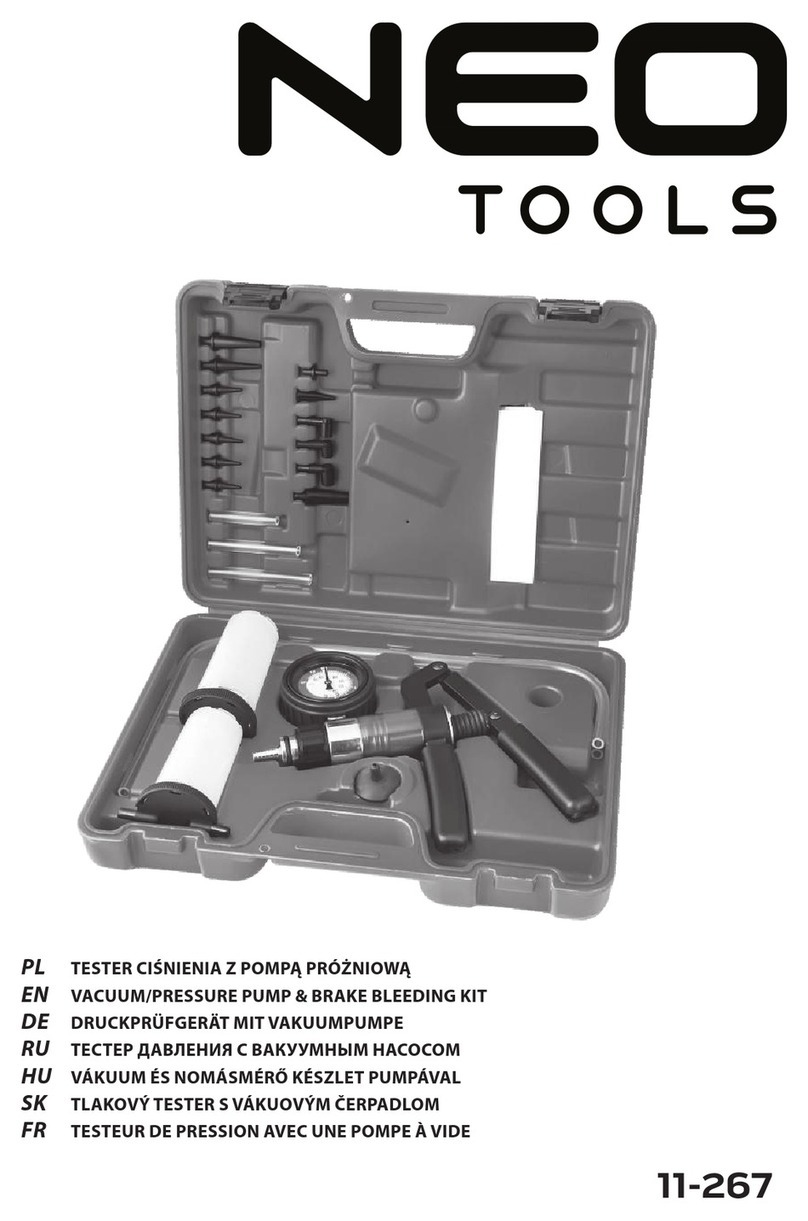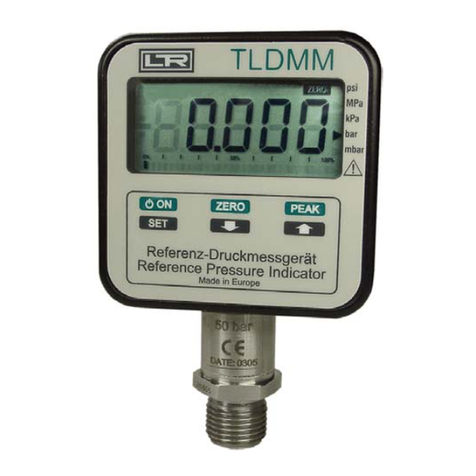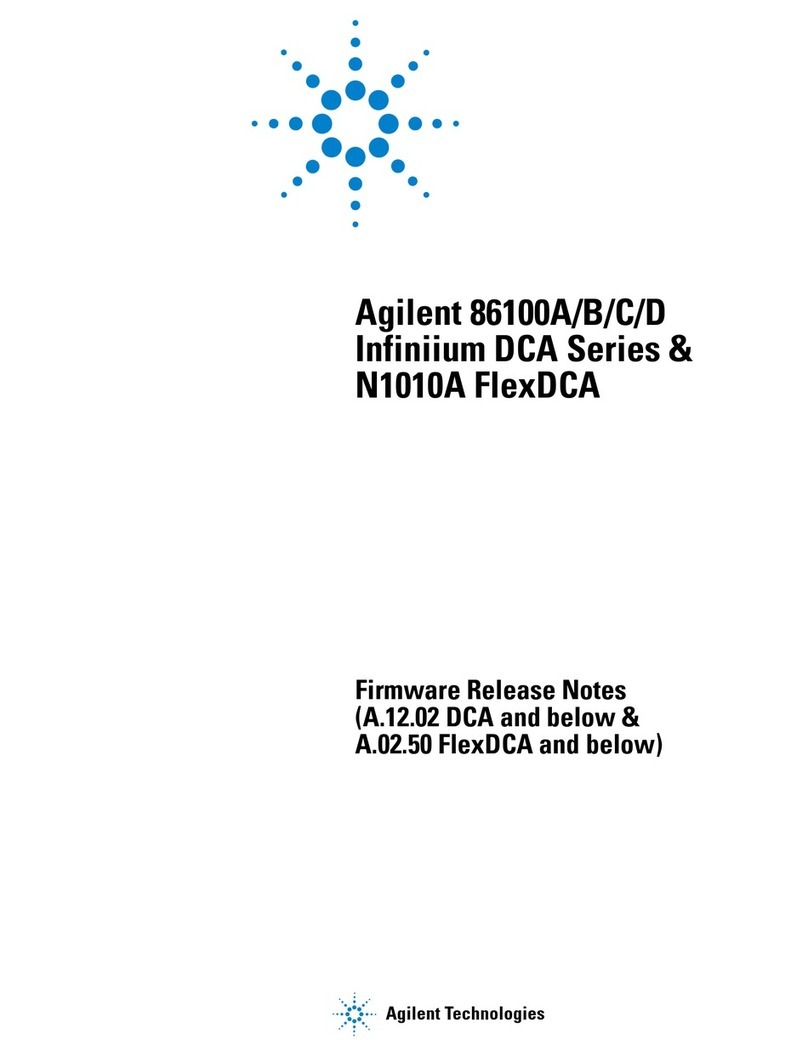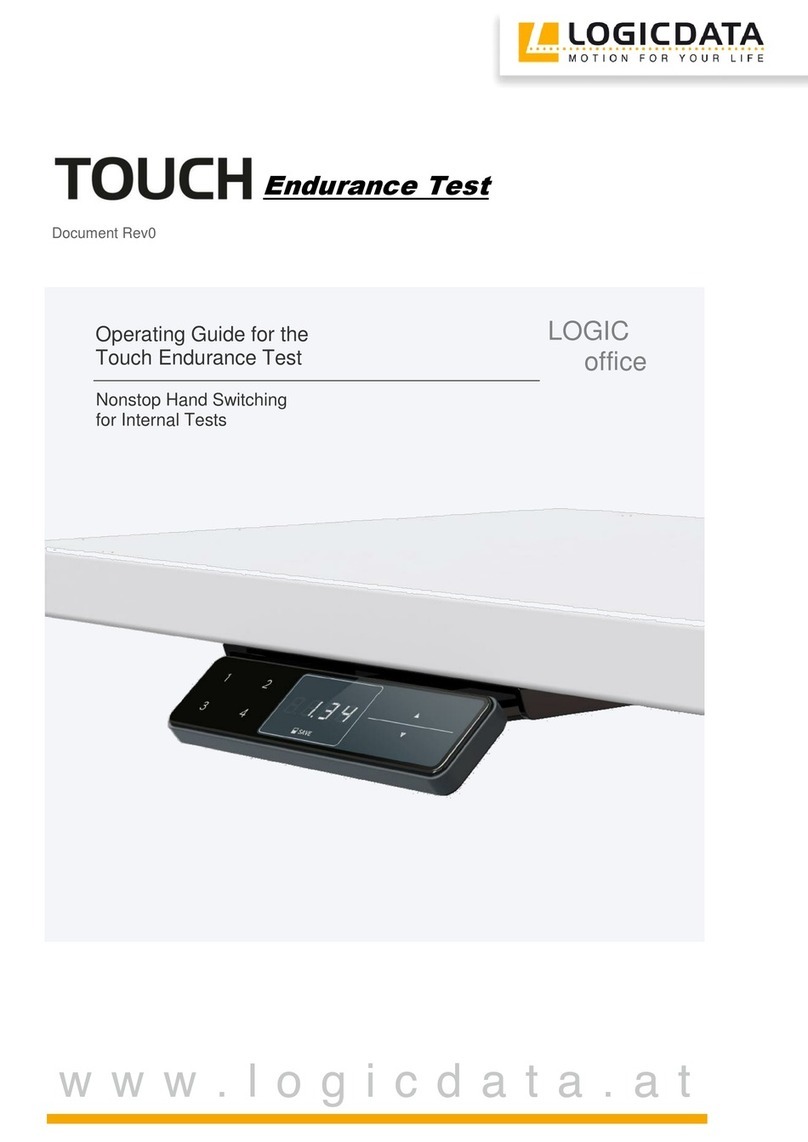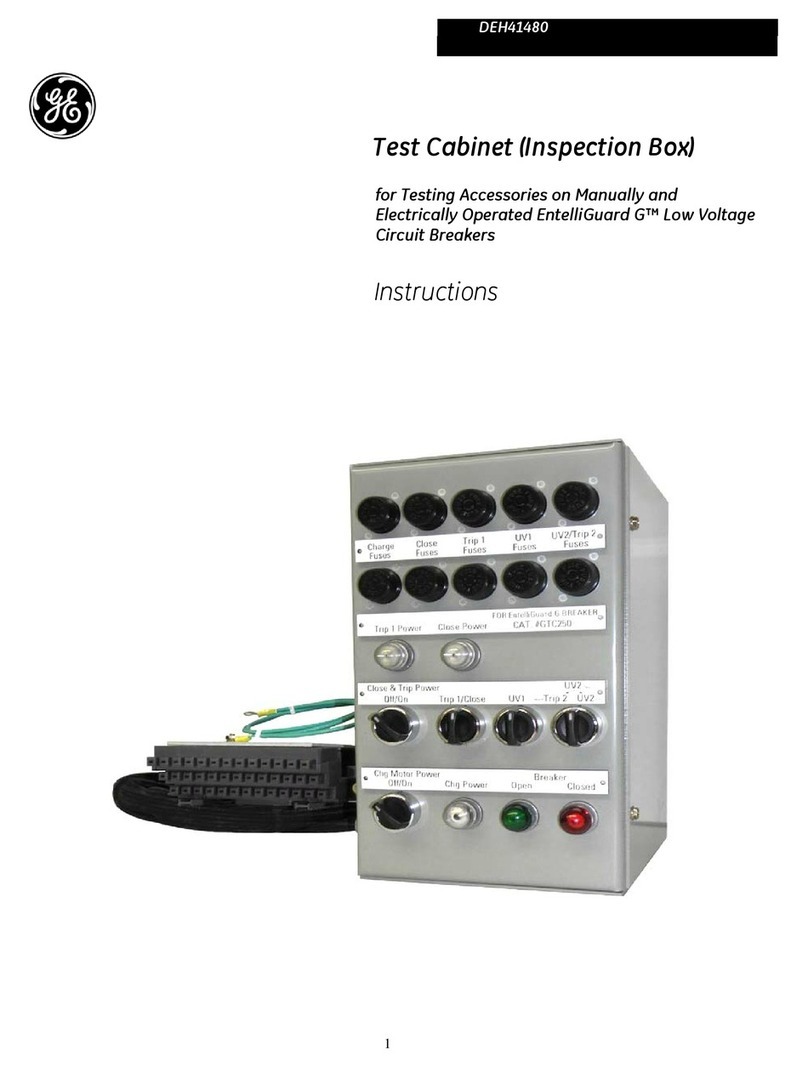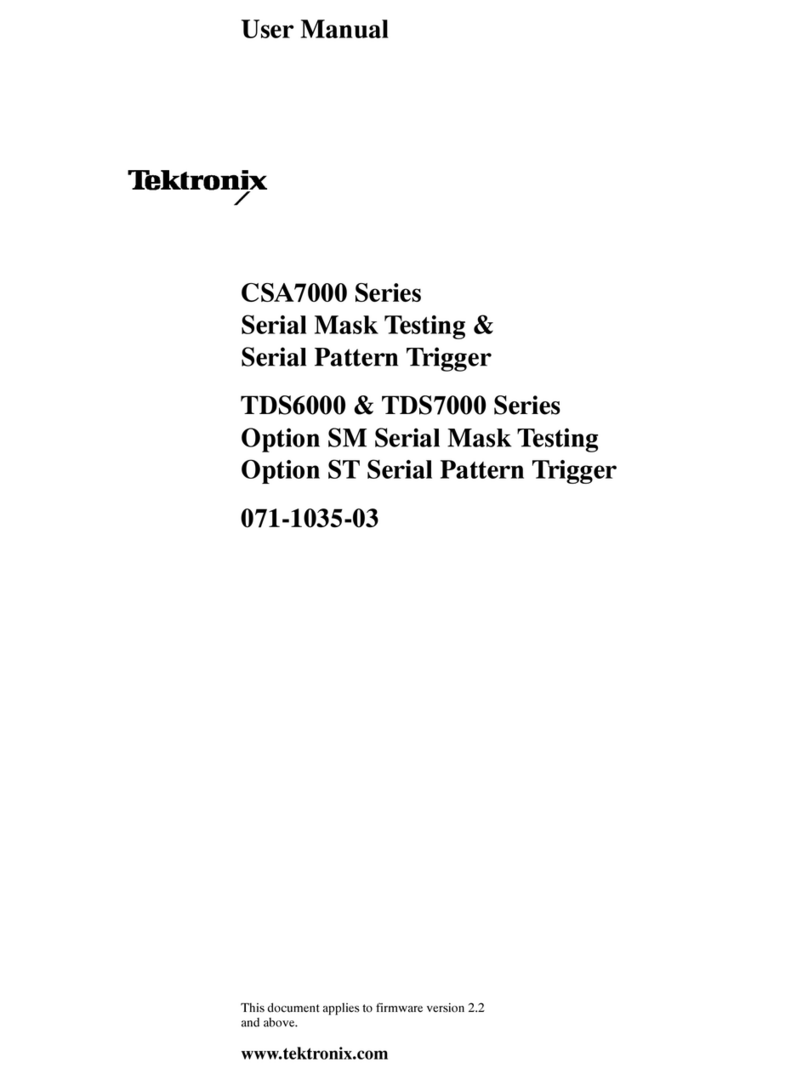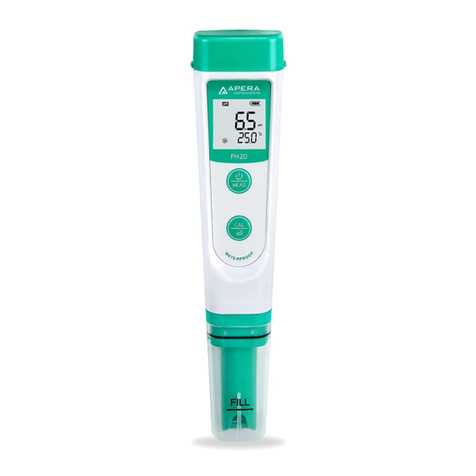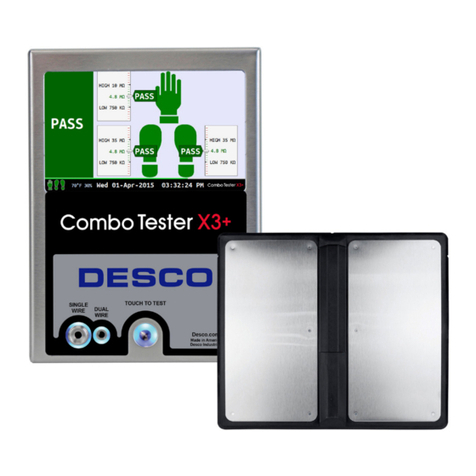Socket & See FFCB 100 User manual

Instruction Manual & Specification
FFCB 100
Easy Fuse Finder
SS0015V2 Sn

2
SS0015V2
1. Safety
1.1 Equipment Markings
1.2 Operational Safety
The Socket & See Fuse Finder is designed for use by suitably qualified personnel
familiar with electrical supply systems.
Before using your fuse finder please read these instructions and safety warnings.
Failure to comply with the safety warnings or use of the unit in a manner not
specified by Socket & See may result in serious injury or damage to equipment.
When testing at light fittings or bare wires (only possible with fused test lead set)
When possible switch off the power.
Take care not to touch unshielded contacts when using the test lead adaptor.
Connect Red or Brown lead to live and Black or Blue lead to neutral. Switch the
power back on and test.
Caution - refer to the instruction manual
Construction is double insulated
Product should be recycled as electronic waste
Conforms to EU standards
Measurement Category III is applicable to test and measuring circuits
connected after the source of the building’s low-voltage MAINS
installation. This part of the installation is expected to have a
minimum of two levels of over-current protective devices between
the transformer and connecting points of the measuring circuit.
Examples of CAT III are measurements on devices installed after the
main fuse or circuit breaker fixed within the building installation. Such
as junction boxes, switches and socket outlets.
CAT

3
SS0015V2
USE EXTREME CAUTION!
Only use in dry conditions.
Always prove that the transmitter and receiver are functioning before use.
Inspect the product before using. If any damage is visible; such as cracks in the
casing , damage to any accessories or leads, the unit should not be used.
2. Description
The Socket and See is a Fuse and MCB locating device. The unit enables
speedy and clear indication of the protective device protecting a circuit to
minimise disruption to installation owners.
2.1 Features
●Audible find tone combines with a bargraph display for clear indication.
●Dual voltage operation. 100 - 250 VAC (50-60 Hz)
●Auto scan technology means no controls to adjust.
●Works equally well with circuit breakers or fuses.
●Auto power off on the receiver to maximise battery life
●FFCB100UKA comes with 13A mains lead
●FFCB200UKA as FFCB100UKA plus fused test leads for use on lighting circuits
●FFCB1140UK as FFCB200UKA plus 16A (2P+E) 110V yellow plug and 16A
(2P+E) 230V blue plug.
2.2 Indication
2
1
1. Receiver ON LED
When the power is on the
LED will remain lit. If the
battery becomes low the
LED will flash and the
battery should be
replaced in accordance
with this manual.
2. MAX / MIN signal LEDs
The more LEDs that are lit
the stronger the received
signal from the transmitter.

4
SS0015V2
3. Usage
3.1 Battery Installation and Status
The fuse finder receiver is powered by a 9V Alkaline battery (not supplied) type
PP3/MN 1604/6F22 or equivalent.
To install a battery remove the screw and the battery compartment cover on
the rear of the receiver enabling access to the battery compartment.
Fit the 9V Battery observing correct polarity, replace the cover and screw.
When fitted with a new battery and turned on the RECEIVER ON LED will be
solidly lit green.
When the battery power becomes low the RECEIVER ON LED will flash. The
battery will have approximately 20% of its capacity left at this stage and will
shortly require replacement. When in use in this almost discharged state all of
the signal strength LEDs will also flash rather than being solidly lit as they are with
a fresh battery.
The transmitter is mains powered and does not require a battery.
3.2 Principles of operation
The transmitter uses the mains supply to generate a modified high frequency
signal into the live conductor, this is detected by the fuse finder receiver. The
signal will not adversely affect other equipment but is powerful enough to work
over cable runs of several hundred meters.
The scanning head uses a ferrite transducer to detect the signal and when
placed on breakers that are connected to the live supply under test will
indicate the presence of the signal.
To obtain the best results from your fuse finder it is helpful to understand that the
signal strength is comparative rather than absolute. This means that each press
of the ON / RESET button resets the sensitivity to maximum and the receiver will
respond when placed in close proximity to any breaker or cable carrying the
signal. During a test the receiver will auto tune its sensitivity to the strongest
signal encountered since the reset button was last pushed. It is therefore
necessary to ensure that all of the breakers that could be protecting a circuit
are scanned at least twice and that you do not stop as soon as a maximum
strength signal is indicated.

SS0015V2
5
3.3 Switch Functions
Transmitter
There is no switch for the transmitter . It will automatically start the injection of
the test signal upon connection to a mains supply.
Receiver
The membrane switch on the receiver has three functions - ON / OFF / RESET
Push and immediately release the switch when the receiver is off; This will turn
the unit on with a steady bleeping and the Green RECEIVER ON LED indicating
that the scanning function is in progress.
Push and immediately release the switch when the receiver is on; This will reset
all scanning function memories to zero, ready to start again, with a steady
beeping and RECEIVER ON LED. Always use the reset function away from the
distribution board so that no signal is present during reset.
Push and hold the switch down for over one second to turn the receiver off.
3.4 Pre-use Check
Before each use of your fuse finder you should prove that the unit is functioning
correctly. To do this switch the receiver on and check that the bottom LED is
green and a steady beeping tone is emitted. If either of these functions are not
present replace the receiver battery before proceeding .Connect the
transmitter to the mains and move the receiver scanning head over the face
label where the frequency on the beeping will become rapid or change to a
continuous tone and all five of the signal strength LED’s will light. If this indication
cannot be obtained the unit should be withdrawn from service.
3.5 Fuse Finding Process
Plug the transmitter into the socket under test and switch the socket on. The red
LED on the transmitter should light.
Go to the consumer unit or fuse box. Turn on the receiver. A steady beeping
tone will be emitted and the RECEIVER ON LED on the receiver will light green to
indicate automatic scanning mode.

6
SS0015V2
Place the scanning head in contact with the face of the circuit breakers or
fuses at a right angle to the direction of the breaker body and run the scanning
head steadily along the row of breakers. When the receiver detects a stronger
signal the frequency of the beeping will increase to a rapid or continuous tone.
The pitch of the beeping will increase and the signal strength LEDs will light,
climbing the bar graph. Ensure that you place the scanning tip on the
installation side rather than the supply side of the breaker switch.
Important: Because the scanning technology used is comparative , on the first
scan of breakers of fuses on the board the MAX SIGNAL / CORRECT FUSE FOUND
LED will often light for several different breakers. This is indicating that the signal
detected is the strongest found so far. Do not stop scanning at this point as it
may not be the strongest signal there is. It is essential to continue scanning all of
the breakers that may protect the outlet under test.
Repeat the scan of the row of breakers without pressing the reset button. With
each sweep the receiver will automatically adjust its sensitivity and disregard
weaker signals.
Continue scanning until the MAX SIGNAL / CORRECT FUSE FOUND LED is lit only
when the scanning head is over one breaker or fuse. This is the breaker
protecting the circuit that the transmitter is plugged into.
Turn the circuit in question off and the signal strength LEDs will extinguish leaving
only the RECEIVER ON LED lit and slow steady beeping tone.
Confirm the correct breaker has been selected by checking that the red LED on
the transmitter is no longer lit.
3.6 Advice for Best Performance
The scanning head uses a ferrite transducer to detect the signal and like a
portable radio varying the angle at which the receiver is held in relation to the
breaker will affect the strength of the signal received. As the receiver works by
comparing the strength of signal received from one breaker with another it is
essential to compare like with like. Observe the following for best results.
Do not let the scanning head wonder around. To operate well, the automatic
scanning memory needs a consistent signal so keep it in touch with the breakers
as you scan and keep the position of the scanning head a similar distance from
the breaker switch.
Keep the black scanning head at the same angle relative to the breakers or
fuses for the duration of the test.

7
SS0015V2
Due to the differing designs of the circuit breakers it may sometimes be unclear
from the above procedure which of two breakers the strongest signal comes
from, particularly if the maximum strength signal appears to come from a
boundary area between two adjacent breakers. In the event of this occurring
one of the following variations should enable clear identification.
●Rotate the receiver (without resetting) through 360º to identify the
orientation in which the strongest signal is found. Reset and re-scan the row
of breakers with the receiver in the optimum position.
●Reset the receiver and test at the opposite (to the common boundary)
edge of each breaker. The strongest signal should come from the correct
breaker.
4. Maintenance and Service
If required, clean with a damp cloth and mild detergent. Do not use abrasives
or solvents.
Access to the protective fuse is gained through the battery compartment.
Contact Socket and See for parts and technical assistance.
Socket and See
Century Road
High Carr Business Park
Newcastle
Staffordshire, UK
ST5 7UG
Tel: +44 (0) 1782 567096
Fax: +44 (0) 1782 567095
Email: [email protected]
Website: www.socketandsee.co.uk

8
SS0015V2
Specification
Operating Voltage
110 -230 VAC
200 - 250 VAC
Overvoltage CategoryCat 3
Operating Frequency 50 - 60 Hz
Power supply Transmitter 110 VAC or 230 VAC
Receiver 9V 6F22 Battery
Weight 950g
Dimensions 260H x 230W x 70D (mm)
Ordering Information
Item Supplier Code
Easy Fuse Finder SOC/FFCB100UKA
Easy Fuse Finder (Inc additional 2-way
lead set) SOC/FFCB200UKA
Dual Voltage Fuse Finder Kit SOC/FFCB1140UK
Dead Circuit Finder DCF200
Combined fuse and dead circuit
finder kit (FFC200/DCF200) SOC/FFCDCFKIT
Table of contents
Other Socket & See Test Equipment manuals

Socket & See
Socket & See PDRC 380 User manual
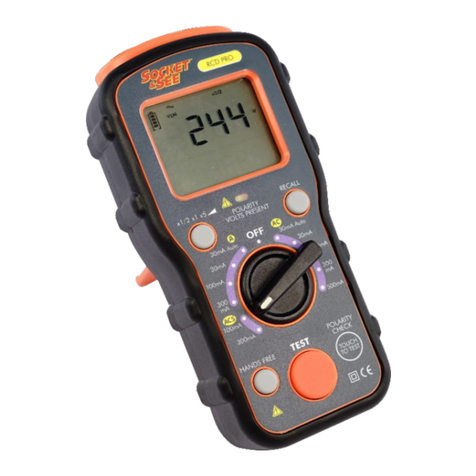
Socket & See
Socket & See RCD PRO User manual
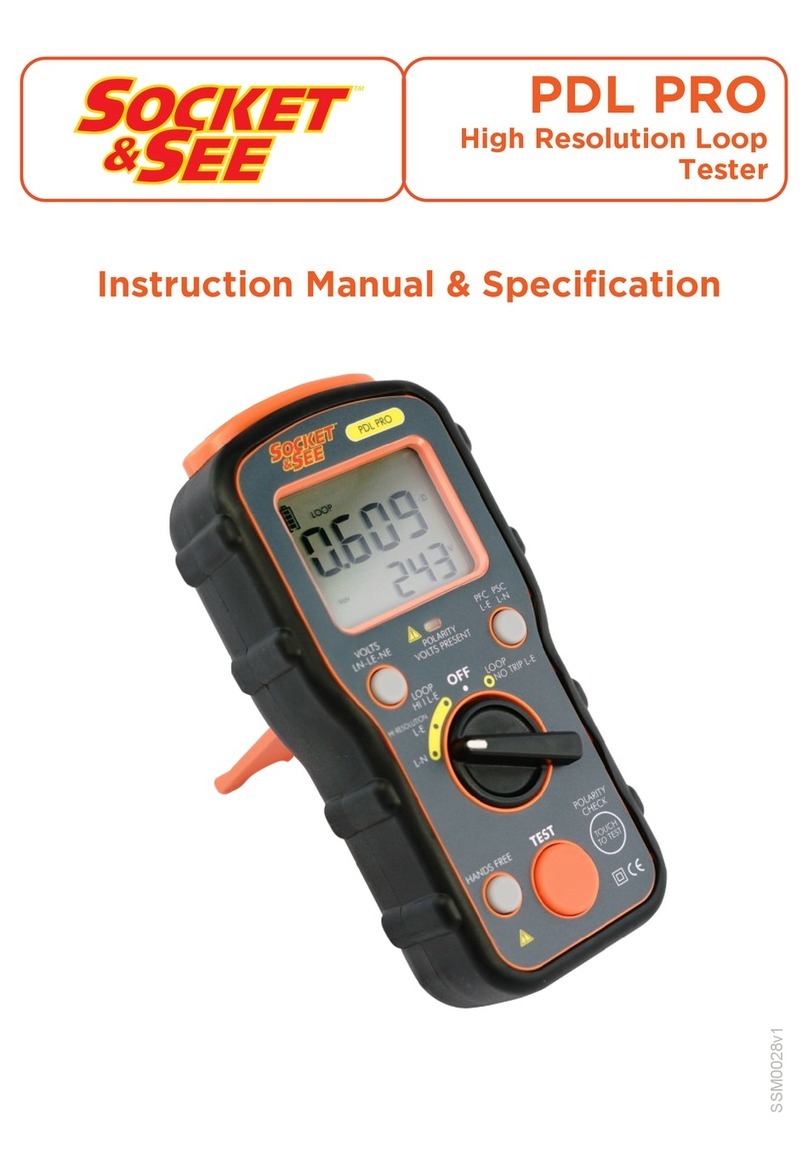
Socket & See
Socket & See PDL PRO User manual
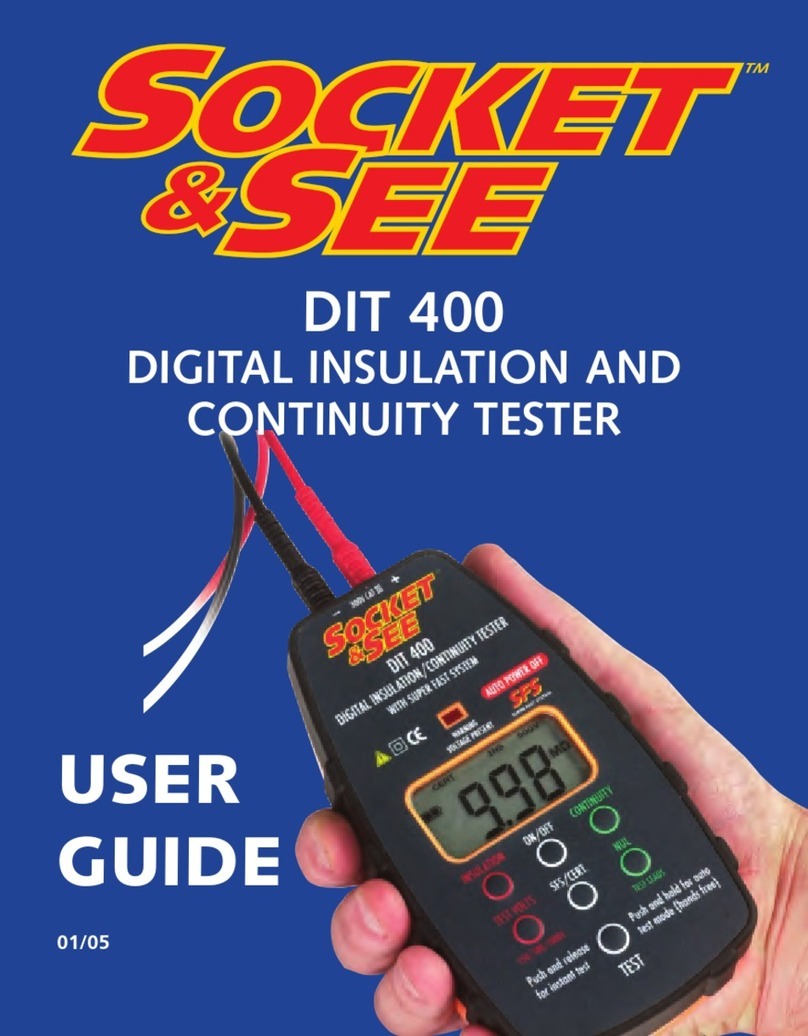
Socket & See
Socket & See DIT 400 User manual

Socket & See
Socket & See SP 200 User manual
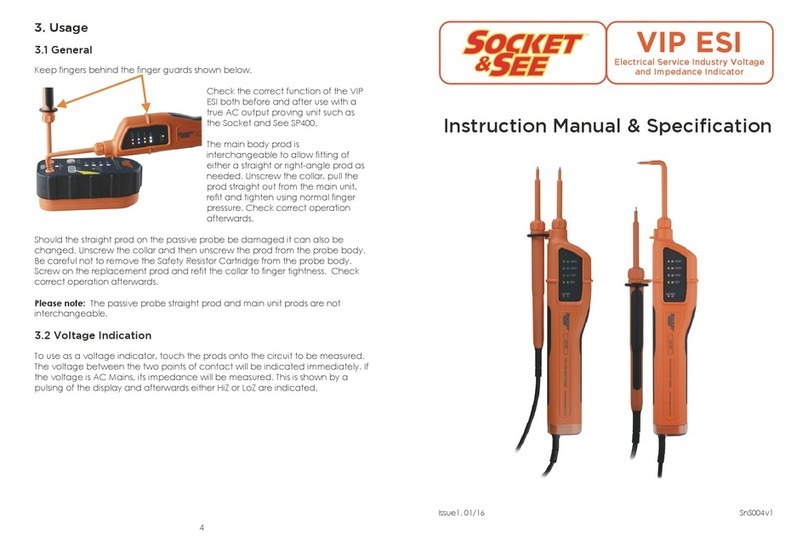
Socket & See
Socket & See VIP ESI User manual
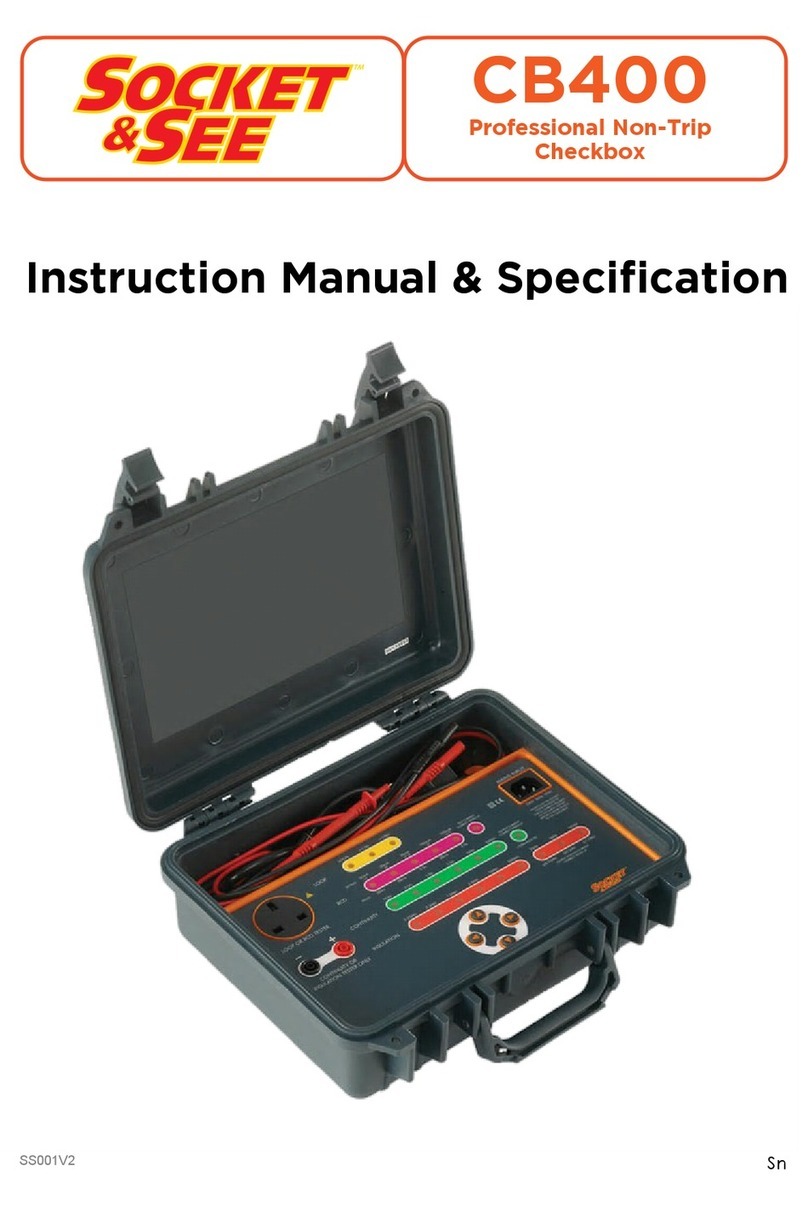
Socket & See
Socket & See CB400 User manual
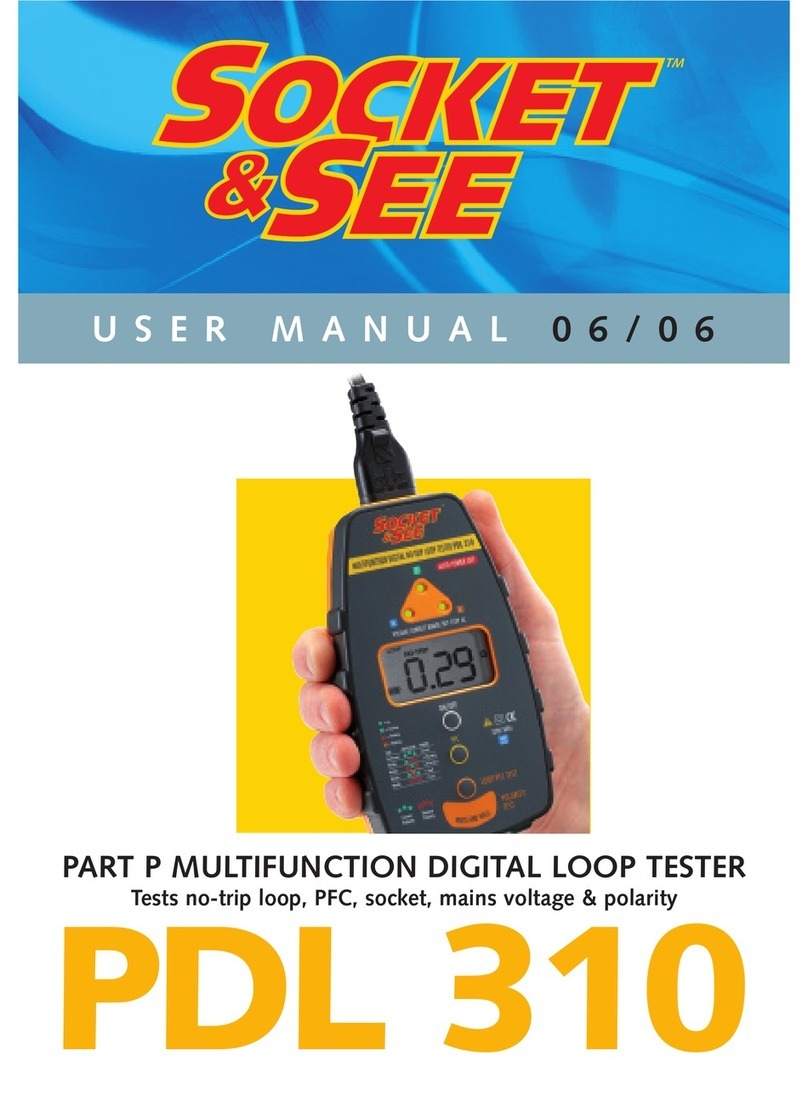
Socket & See
Socket & See PDL 310 User manual
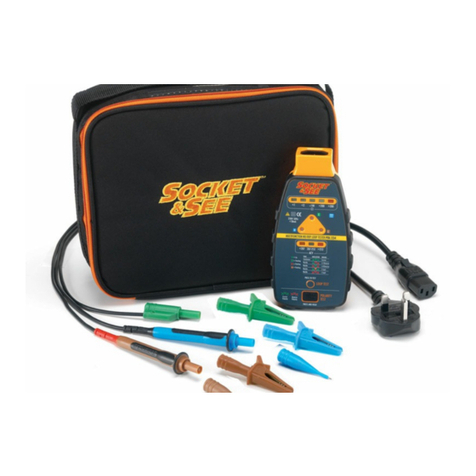
Socket & See
Socket & See PDL 234Plus User manual
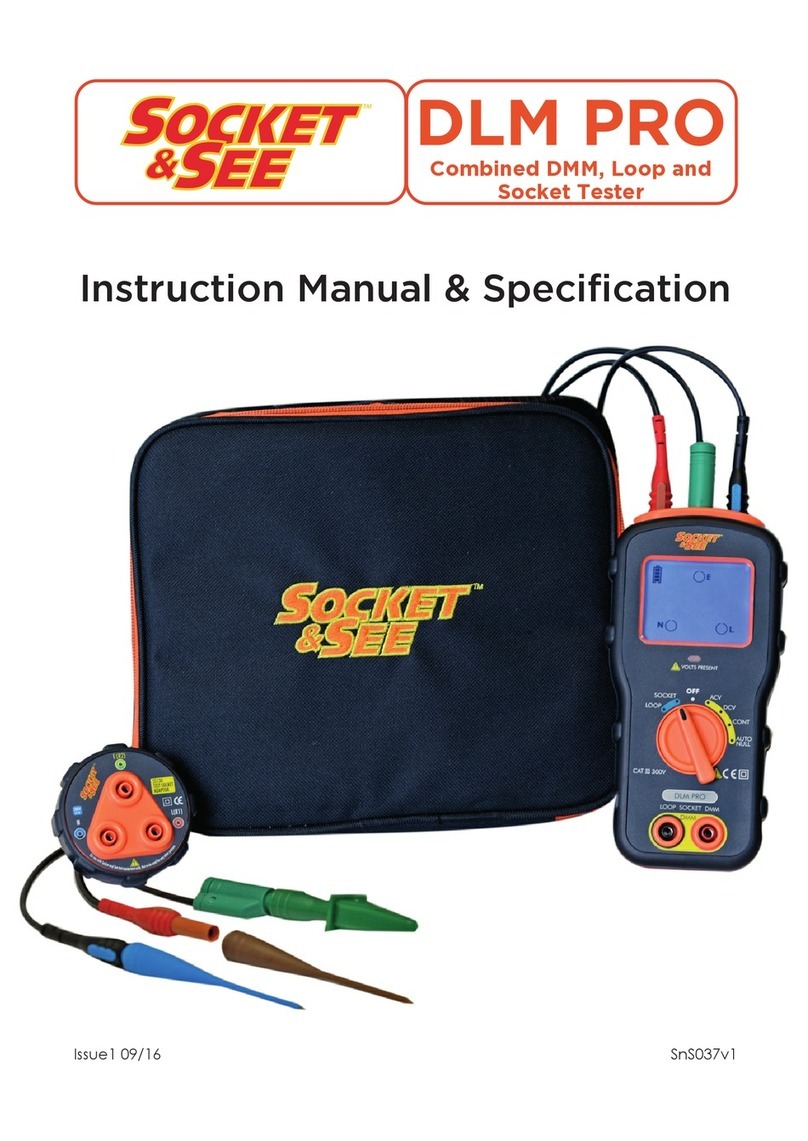
Socket & See
Socket & See DLM PRO User manual
